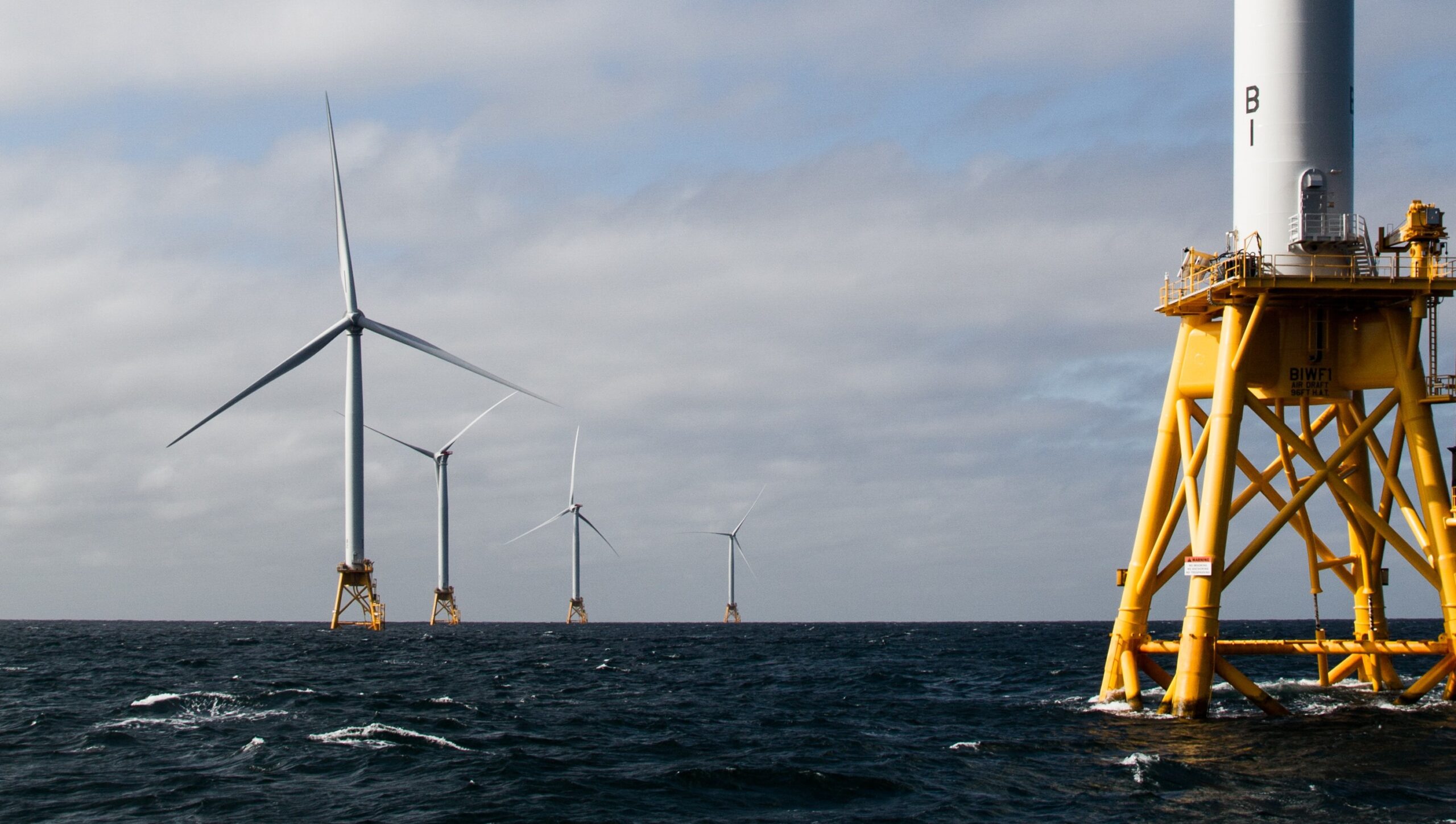This week, the Massachusetts Institute for a New Commonwealth, a nonpartisan think tank better known as MassINC, published a modest account of a boat ride in its journal, CommonWealth. Massachusetts state lawmakers, local officials from Martha’s Vineyard, and others on board were touring the construction site for the nation’s first commercial scale offshore wind farm, Vineyard Wind I, slated to begin operation next year. The farm is located south of Martha’s Vineyard and will consist of 62 wind turbines, spaced a mile apart, providing enough electricity to power 400,000 homes. CommonWealth reports that the lawmakers gushed superlatives about the project, one regarding it as this generation’s Hoover Dam. Success came after proponents overcame technical, regulatory and financial hurdles that had defeated an earlier project, Cape Wind, a 130 turbine undertaking that would have been placed in the middle of nearby Nantucket Sound. Vineyard Wind’s triumph leads the way for a new US industry that should become a crucial energy pillar for the emerging green economy.
It is instructive to look at Vineyard Wind within a broad global context. When the project begins operating, total US offshore wind power generation will immediately jump by a factor of twenty, yet the country will still trail China and Europe by thirty- and forty-fold, respectively. Offshore wind is already a mature industry in those parts of the world, boasting a total operating capacity of 55 gigawatts (GW) at the beginning of this year, with another 34 GW in construction (for comparison, Vineyard Wind’s 62 turbines will have a total capacity of just 0.8 GW, though this is a respectable size for a single project). Although Congress established a legal framework for offshore wind in 2005, domestic growth of the industry was long delayed by uncertain federal regulations and failure to enact robust policies for sharing the financial risks of development.
Regulatory streamlining and financial incentives are especially important for offshore wind because of the long project development times and multiple competing interests in the resource. The federal government regulates the industry through the Bureau of Ocean Energy Management (BOEM), which manages projects through multiple phases, beginning with identification of suitable offshore Wind Energy Areas in federal waters, followed by leasing of these areas to developers through competitive auctions. Winning companies then submit detailed plans to BOEM describing their proposed facilities and operations, and undergo environmental review under state and federal laws. Developers also have to coordinate with state and local authorities because they must operate in state waters (out to three miles from shore) and make connections to the power grid via undersea cables.
Delay or difficulty anywhere in the process creates openings for those who oppose the project on environmental (impacts to native ecology and marine mammals), commercial (interference with fishing operations), or aesthetic grounds. There is also the financial angle. To attract private investment, developers must first make power purchase agreements with electric utilities, but these contracts are highly susceptible to project delays as utilities’ need to serve customers leads them to seek power elsewhere. Many of these issues contributed to the demise of Cape Wind and continue to challenge new projects today.
Fortunately, there is now ample evidence that the US offshore wind industry is done with its growing pains and is coming into its own at a scale at least commensurate with the successes in China and Europe. Besides Vineyard Wind, two other projects are fully permitted and under construction on the Atlantic Coast: Ocean Wind 1 off the New Jersey shore, and South Fork Wind Farm east of Long Island. Eight more Atlantic coast projects are at an advanced environmental review stage, an additional seven are in earlier stages of BOEM review, and ten further leases have been awarded to project developers. Together, these proposed projects blanket the East Coast from Massachusetts to North Carolina and have a combined capacity of 40 GW. Even if some are unsuccessful, the initiatives are numerous enough to likely go some sizable part of the way toward meeting the Biden administration’s objective to reach 30 GW of offshore wind power by 2030, while establishing a pathway to 110 GW by mid-century. Significantly, BOEM is working to streamline the permitting process, having just issued a checklist to new developers laying out what must be included in construction and operations plans before their projects can qualify for environmental review. This suggests that the confusion and delay that often plagued early projects is giving way to a more transparent process in which expectations are clearer. The generous tax credits for wind energy included in last year’s Inflation Reduction Act are another driver that will act in favor of keeping projects in the pipeline.
The Atlantic seaboard is not the only venue for US offshore wind aspirations. Last month the Biden administration announced availability of the first leases in the Gulf of Mexico, and scheduled a competitive auction for the end of this month. The three leases together cover nearly 500 square miles, twice the size of Vineyard Wind. In December of last year, the first Pacific coast leases were awarded to five developers for parcels on the central and north coast of California. The opening of the Pacific coast market coincides with issuance of a comprehensive report by the California Energy Commission, describing options for efficient permitting and environmental review. The Pacific coast will take time to develop, however, because waters in the near offshore region are too deep to allowing anchoring of the windmills directly to the seabed, as is possible in most areas of the Gulf and Atlantic coasts. Instead, developers will use floating technology, in which turbines are mounted on buoyant platforms and connected to the ocean floor with mooring lines and anchors. A few such platforms are in commercial operation already, and the Department of Energy has announced a “Floating Offshore Wind Energy Shot” initiative to reduce the costs of deep water projects.
The sheer magnitude of the resource is another reason to be optimistic about offshore wind. The National Renewable Energy Laboratory (NREL) has issued a report estimating the total technical potential for offshore wind energy around the continental US, building on its earlier regional efforts, and excluding conservation areas, shipping lanes and offshore operations associated with energy development, national defense and other uses. The NREL estimate is for 4200 GW of potential electrical power, two-thirds of which is in deep water and will require floating technology. This is nonetheless an enormous number, over triple today’s total US electricity generation capacity of 1200 GW from all sources combined. The shallow water resource alone is large enough to be a game changer, substantially augmenting onshore wind and solar development and offering some relief from the need to allocate ever larger amounts of land to those projects.
Finally, offshore wind is a green technology with at least some potential to bridge the US political divide. The basic reason is that the construction of offshore wind turbines leverages the hard-won offshore operations expertise of oil and gas companies. European oil majors have already joined the party: the 2.1 GW Empire Wind project off Long Island includes investments from both Equinor and BP, and a subsidiary of Royal Dutch Shell is involved in the Atlantic Shores offshore wind partnership that is committed to several other initiatives. Although US oil majors have clearly been reluctant to get involved, the opening of leases in the Gulf of Mexico may offer an opportunity in their backyard that is too good to pass up. At the least, such a development could discourage right-wing attacks on the industry. It may also offer possibilities for the oil and gas workforce in the Gulf to find a place in the green energy economy, perhaps even nurturing the seed of an idea that something other than conflict around energy issues is plausible. We can hope.
______________________________
https://commonwealthmagazine.org/energy/reviews-very-positive-on-vineyard-wind-1/
https://www.windpowerengineering.com/lessons-learned-from-cape-wind/
https://wfo-global.org/wp-content/uploads/2023/03/WFO_Global-Offshore-Wind-Report-2022.pdf
https://www.nrel.gov/docs/fy23osti/84605.pdf
https://2035report.com/offshorewind/downloads/
https://www.boem.gov/newsroom/press-releases/boem-finalizes-wind-energy-areas-central-atlantic
https://www.northeastoceandata.org/offshore-wind-projects/
https://www.energy.gov/sites/default/files/2022-08/offshore_wind_market_report_2022_ppt_2.pdf
http://eelp.law.harvard.edu/wp-content/uploads/Offshore-Wind-Development-Blog_03242020.pdf
https://www.nrel.gov/docs/fy22osti/83650.pdf
https://www.energy.gov/eere/wind/floating-offshore-wind-shot

